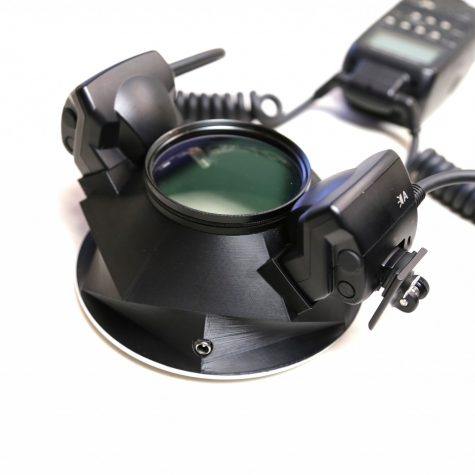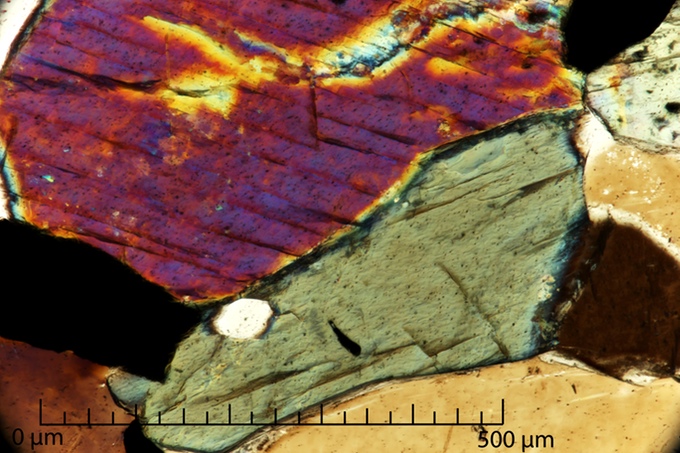Petrographic Analyzer
$599.00The device is made to work with and fit the MT-24EX Flash by Canon. (Flash is not Required)
If you’ve never taken an advanced course in the geosciences… then it’s likely that you’ve never seen an image like the one below.
Hornblende and Plagioclase in Thin Section
This is an image of a geological thin section, which represents the crystalline matrix and composition of a particular rock type. In the past, the only way to see properties such as these would have been to place a paper thin slice of rock onto a polarizing or petrographic microscope, which is distinguished from the more usual biological microscope in that it is equipped with a rotating stage and two polarizing filters – one below the sample and one above it.
Petrographic Microscope
The problem is, polarizing microscopes are expensive and the reason why you’ve never seen images like those shown in the video is because access is limited to geology students and research professionals.
This is a problem considering that many of the most intimidating subjects can be taught and understood in the context of geology. The Andes of South America are mostly made from a rock called Andesite, which contains minerals such as Plagioclase, Pyroxene and Hornblende. These minerals can be further broken down into compounds containing elements such as Calcium, Sodium, Iron, Silicon, Aluminum and Oxygen; only to name a few. This demonstration is one logical approach to instructing young students about atoms.
Similarly, much of what we know about evolution comes from fossils found in the rock record. These rocks contain minerals, structures and other depositional features that provide information about the origin and time of formation. Seeing these features is a thruway to plate tectonics, which is one of Earth’s greatest natural examples of popular mechanics and physics.
So for reasons we’re obviously passionate about, we wanted to develop a low-cost solution to the petrographic microscope that would allow students in primary and secondary schools to experience information that has never been available to them in the past.
Petrographic Analyzer
That’s why we’ve created the Petrographic Analyzer. The Petrographic Analyzer can be used in conjunction with any stereoscope or hand lens. It also allows the user to polarize the slide and rotate the stage. The analyzer is internally illuminated for basic observation applications. This makes observing the sample easy to do with any existing stereoscope, but also provides flexibility when imaging. For example, images can even be taken with a camera phone.
For more professional applications, the observer will never lose context of the sample. This is important for quantitating your observations and provides more flexibility when examining the sample. The windows in the side of the analyzer permit the use of external light sources such as fiber optic lights and other camera flashes. Since all of the light is deflected off of a white surface, the light is diffuse enough to allow for extremely high resolution imaging.
50x Pyroxene and Chlorite
The above is an image of Pyroxene and Chlorite at 50x magnification. It yields details beyond clay scale and down to 1 micron in size.
Currently, the analyzer is a 3D printed hardware component with a magnetic base, which stabilizes the apparatus on any stand. The polarizer itself is detachable and can be fixed onto any lens, a stereoscope or placed directly on top of the stage for observation purposes.
The Petrographic Analyzer Works With:
- Hand Lenses
- Cell Phone Cameras
- Digital Camera
- USB Microscopes
- Stereoscopes
- DSLR Cameras
- Macro Lenses
- Focus Stacking Gear




















